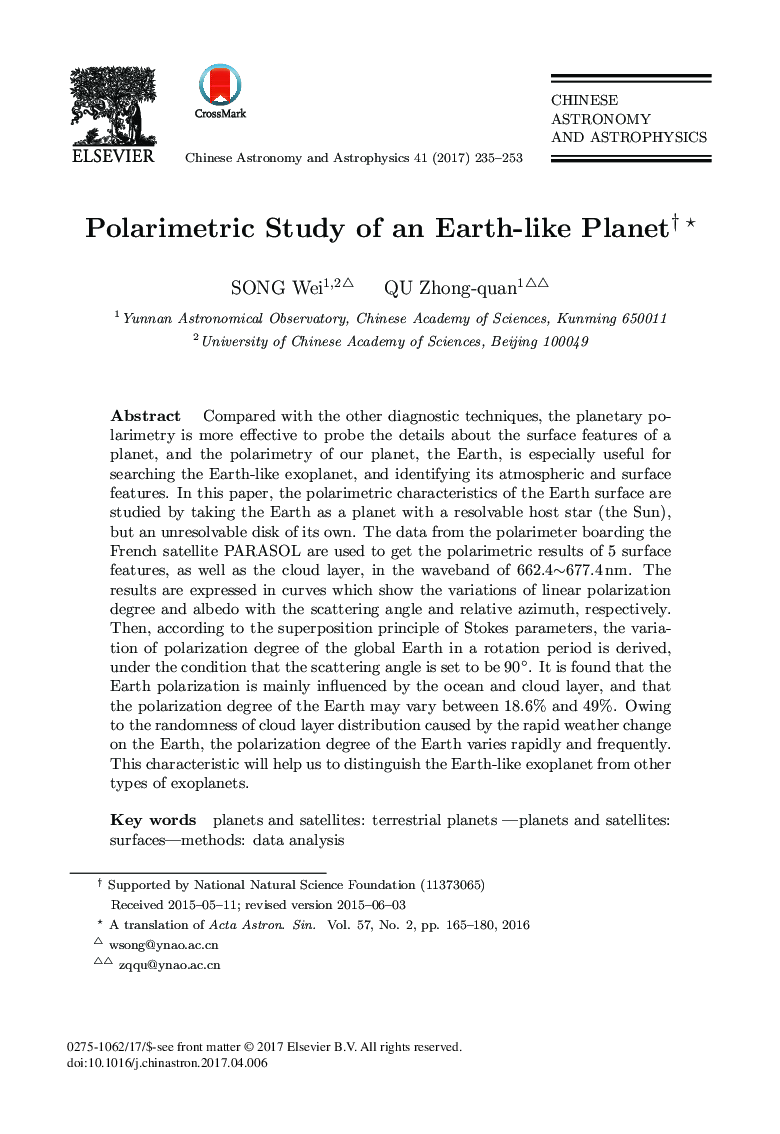| Article ID | Journal | Published Year | Pages | File Type |
|---|---|---|---|---|
| 8133307 | Chinese Astronomy and Astrophysics | 2017 | 19 Pages |
Abstract
Compared with the other diagnostic techniques, the planetary polarimetry is more effective to probe the details about the surface features of a planet, and the polarimetry of our planet, the Earth, is especially useful for searching the Earth-like exoplanet, and identifying its atmospheric and surface features. In this paper, the polarimetric characteristics of the Earth surface are studied by taking the Earth as a planet with a resolvable host star (the Sun), but an unresolvable disk of its own. The data from the polarimeter boarding the French satellite PARASOL are used to get the polarimetric results of 5 surface features, as well as the cloud layer, in the waveband of 662.4â¼677.4 nm. The results are expressed in curves which show the variations of linear polarization degree and albedo with the scattering angle and relative azimuth, respectively. Then, according to the superposition principle of Stokes parameters, the variation of polarization degree of the global Earth in a rotation period is derived, under the condition that the scattering angle is set to be 90°. It is found that the Earth polarization is mainly influenced by the ocean and cloud layer, and that the polarization degree of the Earth may vary between 18.6% and 49%. Owing to the randomness of cloud layer distribution caused by the rapid weather change on the Earth, the polarization degree of the Earth varies rapidly and frequently. This characteristic will help us to distinguish the Earth-like exoplanet from other types of exoplanets.
Keywords
Related Topics
Physical Sciences and Engineering
Physics and Astronomy
Astronomy and Astrophysics
Authors
Song Wei, Qu Zhong-quan,
